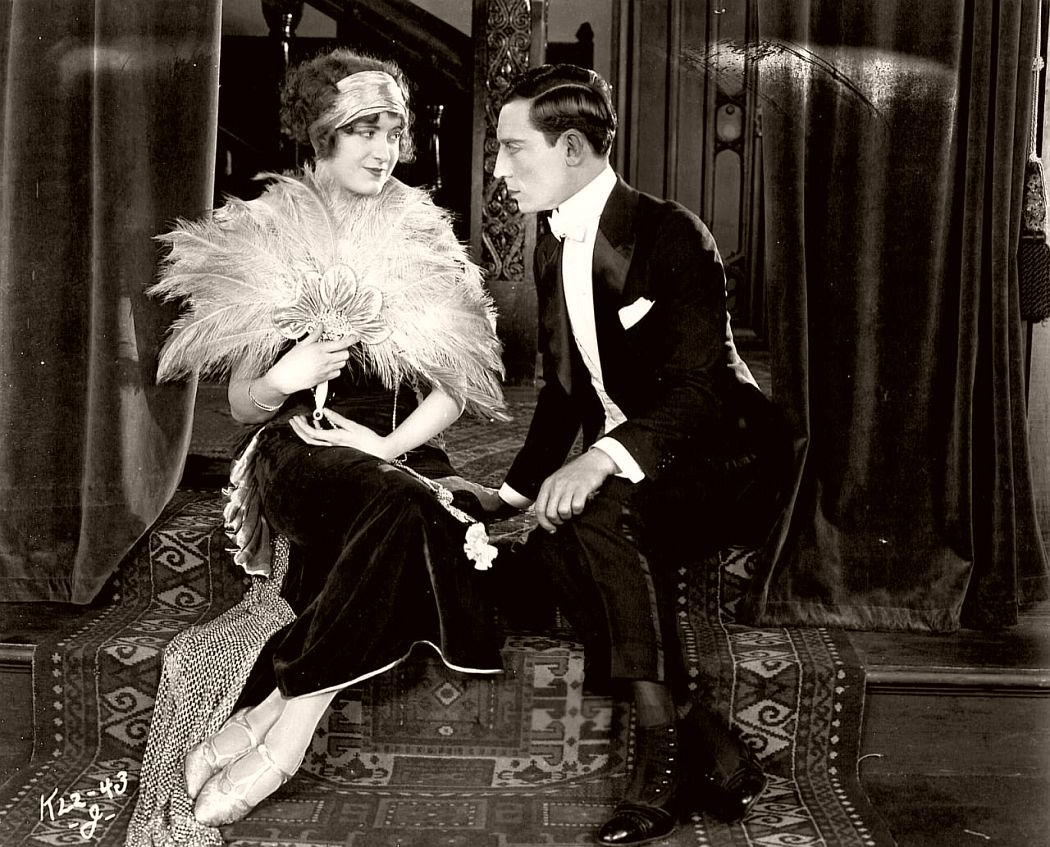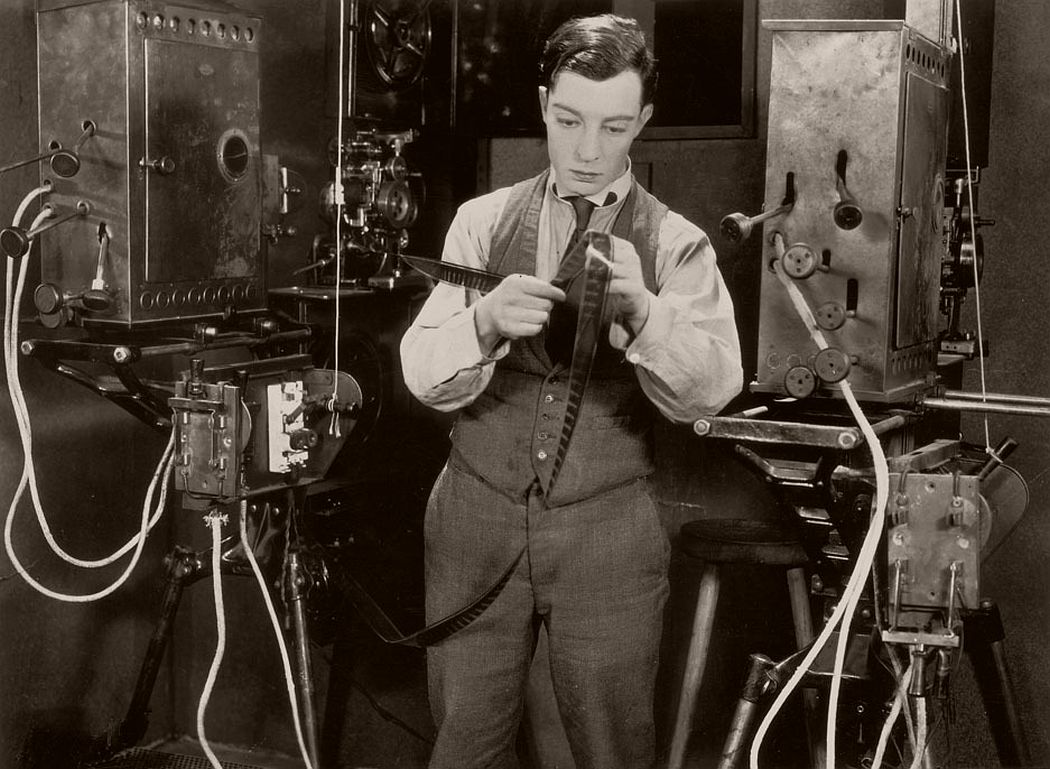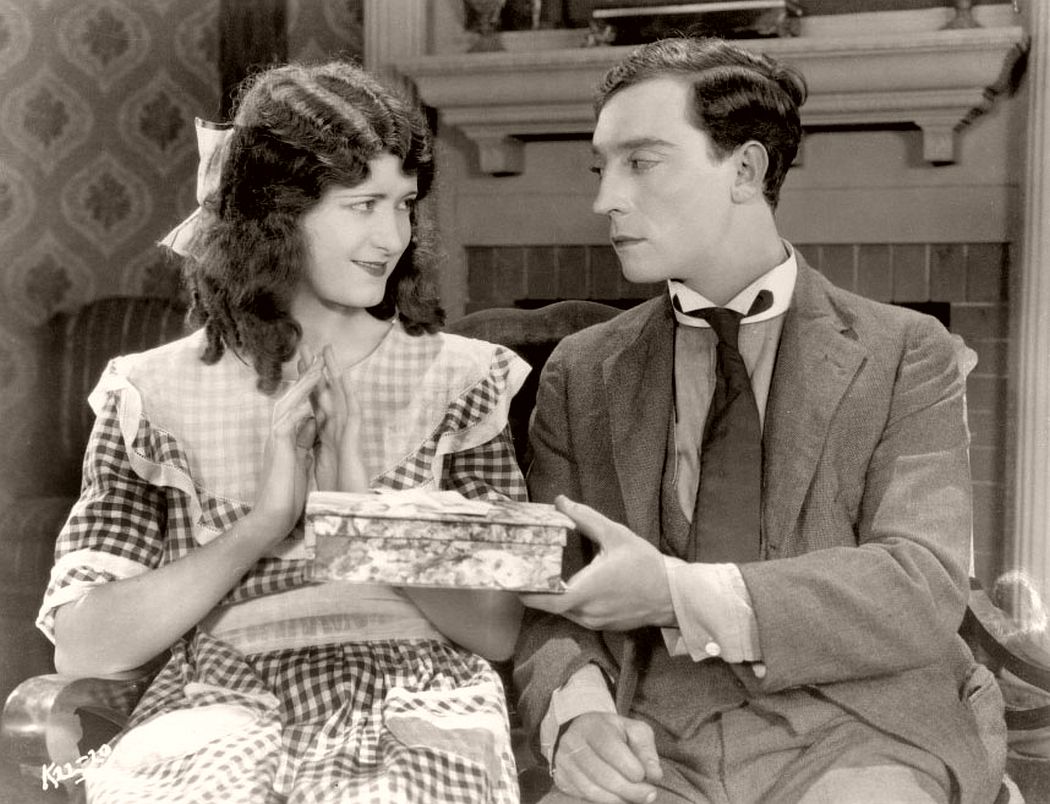Sherlock Jr. is a 1924 American silent comedy film directed by and starring Buster Keaton.
A movie theater projectionist and janitor (Buster Keaton) is in love with a beautiful girl (Kathryn McGuire). However, he has a rival, the “local sheik” (Ward Crane). Neither has much money. The projectionist buys a $1 box of chocolates, all he can afford, and changes the price to $4 before giving it and a ring to her. The sheik steals and pawns the girl’s father’s pocket watch for $4. With the money, he buys a $3 box of chocolates for the girl. When the father notices his watch is missing, the sheik slips the pawn ticket into the projectionist’s pocket unnoticed. The projectionist, studying to be a detective, offers to solve the crime, but when the pawn ticket is found in his pocket, he is banished from the girl’s home.
While showing a film about the theft of a pearl necklace, the projectionist falls asleep and dreams that he enters the movie as a detective, Sherlock Jr. The other actors are replaced by the projectionist’s “real” acquaintances. The dream begins with the theft being committed by the villain (played by the local sheik) with the aid of the butler (played by the hired man). The girl’s father calls for the world’s greatest detective, and Sherlock Jr. arrives. Fearing that they will be caught, the villain and the butler attempt to kill Sherlock through several traps, poison, and an elaborate pool game with an exploding 13 ball. When these fail, the villain and butler try to escape. Sherlock Jr. tracks them down to a warehouse but is outnumbered by the gang that the villain was selling the necklace to. During the confrontation, Sherlock discovers that they have kidnapped the girl. With the help of his assistant, Gillette, Sherlock Jr. manages to escape this situation, save the girl, and defeat the gang.
When he awakens, the girl shows up to tell him that she and her father learned the identity of the real thief after she went to the pawn shop to see who actually pawned the pocket watch. As a reconciliation scene happens to be playing on the screen, the projectionist mimics the actor’s romantic behavior.















